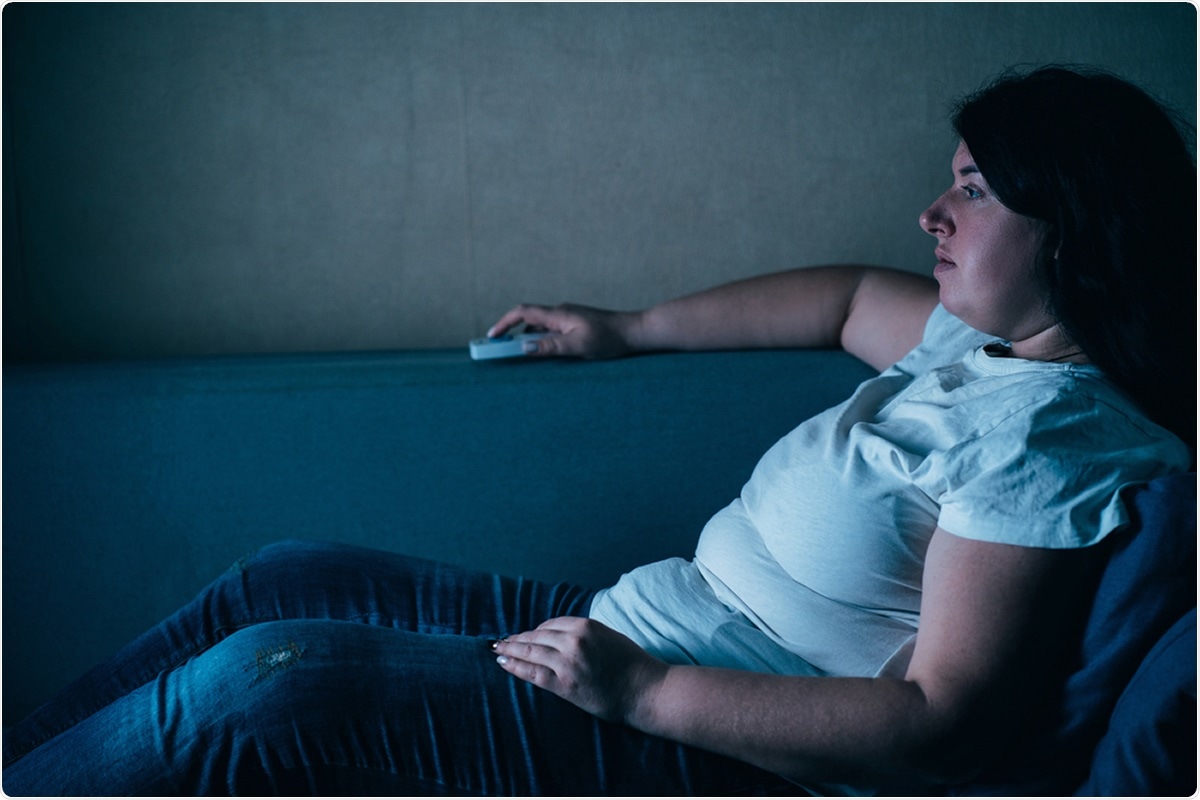The coronavirus disease 2019 (COVID-19) pandemic has brought the world to a standstill on many levels. Researchers from the University of Strathclyde have studied the lasting impact of behavioral outcomes changes during lockdown measures enforced to mitigate the COVID-19 infection. While there are reports of the changes in 24-hour movement behaviors at the start of Scotland’s national lockdowns, little is known about these behaviors throughout the lockdown period and when restrictions initially started to ease.
A new study by researchers at the University of Strathclyde, published as a preprint on the medRxiv* server, examined changes in 24-hour movement behaviors across three designated period blocks: from 1) pre-lockdown (T1) to the 1st UK national lockdown (T2); and 2) first UK national lockdown to initial easing of lockdown (T3).
Understanding these 24-hour movement behaviors during lockdown gleaned from this study will help people maintain or return to healthy lifestyles post COVID-19, the authors write. The determinants of these positive changes, once identified, can be used to inform intervention development.
Several studies have looked at the immediate effects of the COVID-19 pandemic on 24-hour movement behaviors (i.e., physical activity, sitting, and sleeping). Evidence shows that COVID-19 changed behavioral patterns. Many people reported a decline in physical activity, increased sedentary behavior, and poor sleep. Changes in 24-hour movement behaviors may further compound the negative changes reported in mental and physical health during the pandemic. Before the COVID-19 epidemic, it was common knowledge that 24-hour movement behaviors are associated with physiological and mental health. Since then, it has been suggested that physical activity changes due to COVID-19 increase the risk of cardiovascular disease. Also, studies have reported that those who engaged in more physical activity, less sedentary behavior, and adequate sleep reported better mental health outcomes at the start of the covid-19 pandemic.
In this research, the study cohort comprised participants primarily recruited through social media advertisements on Facebook and Twitter, with a sample size of 2,458. On average, the age of participants in this study was 46.2 years of age, most of whom were females (about 80.4%). The participants gave inputs on the frequency and duration of moderate and vigorous physical activities, including walking, during the specific period. Sedentary behavior was measured hours spent sitting during a typical week pre-lockdown (T1), during the first UK lockdown (T2), and as restrictions initially started to ease (T3). Likewise, sleep measurements were done based on the number of hours the participants slept every night during the study period. Despite the study being longitudinal with a large sample size, its limitations are self-report bias, predominantly female individuals, and under-representation of important socio-demographic groups.
With the change in the period blocks set out in the study - from T1 to T2 to T3 – changes in the 24-hour movement behaviors were observed. Due to lockdown restrictions, people reduced walking. However, moderate-to-vigorous physical activity (MVPA), sleep, and sitting from pre-lockdown to lockdown increased. And when the restrictions were eased (the T3 period), the walking, sleep and sitting returned to pre-lockdown levels.
“Understanding the barriers and facilitators of positive change during lockdown enables researchers, practitioners, and policymakers to provide opportunities for healthy behavior change for those most at risk in the post-COVID era,” said the researchers.
Also, when examining shifts within each individual’s behaviors, 20-30% of the participants recorded positive or negative change for each behavior. People who, at T1, did 30-60 minutes of moderate-to-vigorous physical activity or walked per week, sat for 6 to 8 hours and reported either insufficient sleep or too much sleep showed the highest proportion of positive changers by T2. The pattern of results repeated during the ease of lockdown measures.
The study noted any evidence of clustering in these movement behavior changes – in walking, sitting, and sleeping. They also found that one positive behavior influenced at least another positive one. Because the accumulative influence of lifestyle changes on health is greater than just the sum of the two behaviors, this was said to be a very encouraging observation.
Interestingly, from this study, the researchers found that lockdown measures had improved the behavioral change positively in individuals displaying poor levels of each behavior.
This calls for future qualitative studies to better understand what enabled those displaying poor behavior levels positively during the lockdown.
*Important Notice
medRxiv publishes preliminary scientific reports that are not peer-reviewed and, therefore, should not be regarded as conclusive, guide clinical practice/health-related behavior, or treated as established information.
Journal reference:
- Janssen, Xanne and Leanne Fleming, Alison Kirk, Lesley Rollins, David Young, Madeleine Grealy, Bradley MacDonald, Paul Flowers, Lynn Williams (2020) Changes in physical activity, sitting and sleep across the COVID-19 national lockdown period in Scotland. medRxiv 2020.11.05.20226381; doi: https://doi.org/10.1101/2020.11.05.20226381, https://www.medrxiv.org/content/10.1101/2020.11.05.20226381v1
